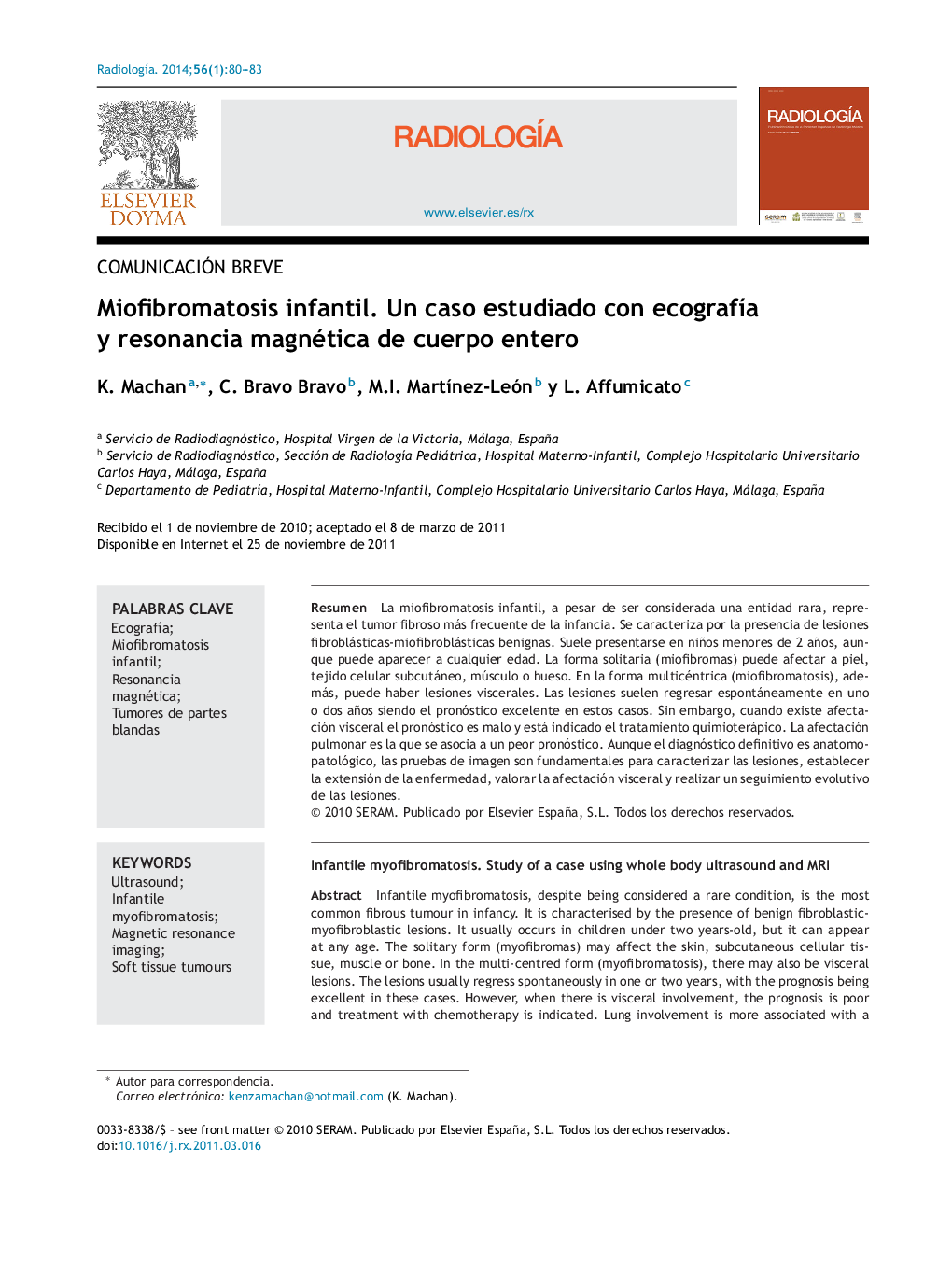| Article ID | Journal | Published Year | Pages | File Type |
|---|---|---|---|---|
| 4245332 | Radiología | 2014 | 4 Pages |
ResumenLa miofibromatosis infantil, a pesar de ser considerada una entidad rara, representa el tumor fibroso más frecuente de la infancia. Se caracteriza por la presencia de lesiones fibroblásticas-miofibroblásticas benignas. Suele presentarse en niños menores de 2 años, aunque puede aparecer a cualquier edad. La forma solitaria (miofibromas) puede afectar a piel, tejido celular subcutáneo, músculo o hueso. En la forma multicéntrica (miofibromatosis), además, puede haber lesiones viscerales. Las lesiones suelen regresar espontáneamente en uno o dos años siendo el pronóstico excelente en estos casos. Sin embargo, cuando existe afectación visceral el pronóstico es malo y está indicado el tratamiento quimioterápico. La afectación pulmonar es la que se asocia a un peor pronóstico. Aunque el diagnóstico definitivo es anatomopatológico, las pruebas de imagen son fundamentales para caracterizar las lesiones, establecer la extensión de la enfermedad, valorar la afectación visceral y realizar un seguimiento evolutivo de las lesiones.
Infantile myofibromatosis, despite being considered a rare condition, is the most common fibrous tumour in infancy. It is characterised by the presence of benign fibroblastic-myofibroblastic lesions. It usually occurs in children under two years-old, but it can appear at any age. The solitary form (myofibromas) may affect the skin, subcutaneous cellular tissue, muscle or bone. In the multi-centred form (myofibromatosis), there may also be visceral lesions. The lesions usually regress spontaneously in one or two years, with the prognosis being excellent in these cases. However, when there is visceral involvement, the prognosis is poor and treatment with chemotherapy is indicated. Lung involvement is more associated with a poor prognosis. Although the definitive diagnosis is by histopathology, diagnostic imaging tests are essential for characterising the lesions, establishing the extent of the disease, assessing visceral involvement, and following up the progression of the lesions.
